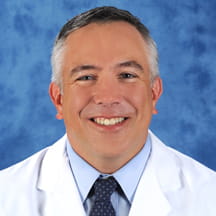When the COVID-19 pandemic reached south Florida in early 2020, we could not have anticipated the profound challenges it would impose on the emergency department (ED) at Nicklaus Children’s Hospital, the region's only freestanding children’s hospital.
A traditionally stable and efficient department, our ED quickly faced unprecedented hurdles that tested our resilience.
Staff morale plummeted to an all-time low. In December 2020, we averaged an alarming rate of one resignation per day. From 2021 to 2023, we had a 30% turnover rate. At one point, 20 RN positions were vacant. As ED volume began to increase again in 2021, the department was significantly understaffed.
May 2022 marked one of the most challenging months in our hospital’s history for patients’ experience, who waited more than an hour to get to a room and more than two hours to see a physician. The length of stay in the first quarter of 2021 was six hours. Daily, more than 40 patients left without being seen (LWBS), which made up a staggering 9% of the total patient visits. From 2021 to 2023, nearly every metric on our internal dashboards was falling short of our goals.
Faced with an untenable situation, we returned to the fundamentals. Over the past two years, we examined our deficiencies and transformed them into efficiencies. These four changes made all the difference:
1. Centering care on patients.
- Created an interdisciplinary patient and employee experience committee.
- Implemented the Emergency Nurses Association’s Emergency Severity Index triage.
- Expanded advanced nursing interventions to expedite and facilitate patient care.
2. Focusing on throughput.
- Introduced a medical fast track process where non-ED physicians treat lower-acuity patients in a separate section leading to overall improvement in length of stay.
- Enabled advanced practice providers (physician assistants and nurse practitioners) to work independently to see patients.
- Developed a real-time dashboard for efficient data analysis and action planning.
3. Strengthening medical leadership collaboration.
- Formed dyad teams, where physicians and nursing leadership share operational oversight.
- Established three committees dedicated to reviewing processes and recommending improvements.
- Fostered a culture of collaboration and goal setting.
4. Boosting staff morale.
- Established a leadership structure to support 24/7 functions of the department, including nightshift leaders.
- Launched a “Summer of Development” to foster the growth and professional development of nursing staff.
- Introduced a unit mentor for new hires and hosted multiple team building activities.
Today, our ED performance has fully recovered and even surpassed prepandemic levels in many areas. Almost all nursing positions have been filled, morale is at an all-time high, and left without being seen days have dropped significantly, to under 1%. We also reduced our length of stay to below 140 minutes, well below our 180-minute target. In 2023, nearly all previously unmet metrics were achieved. Our Press Gainey ratings grew from a 50% top box score in 2021 to 83.9% in August 2024.
Looking ahead, we’ll turn our attention to innovation. We’ll seek to transform how we provide care to our community day to day, including improving access for patients, creating more efficient operations, and growing the next generation of leaders in the department – with the patient and family always at the heart of our mission.



